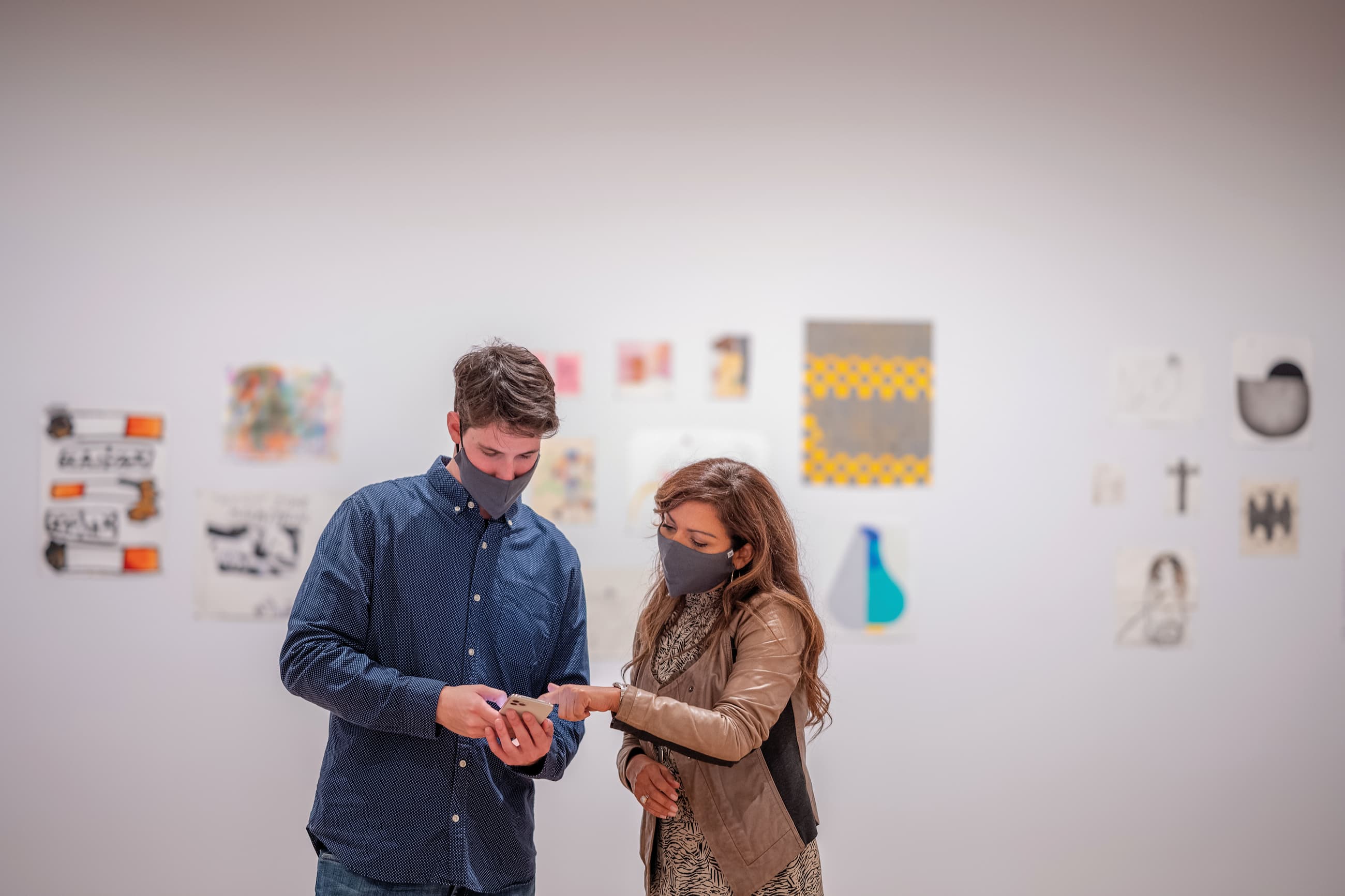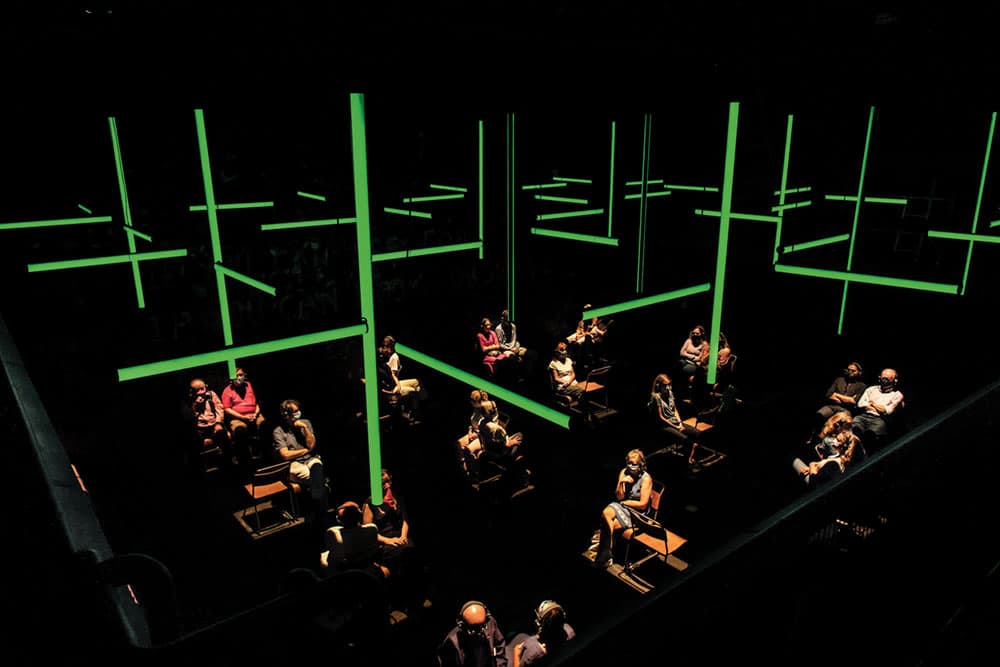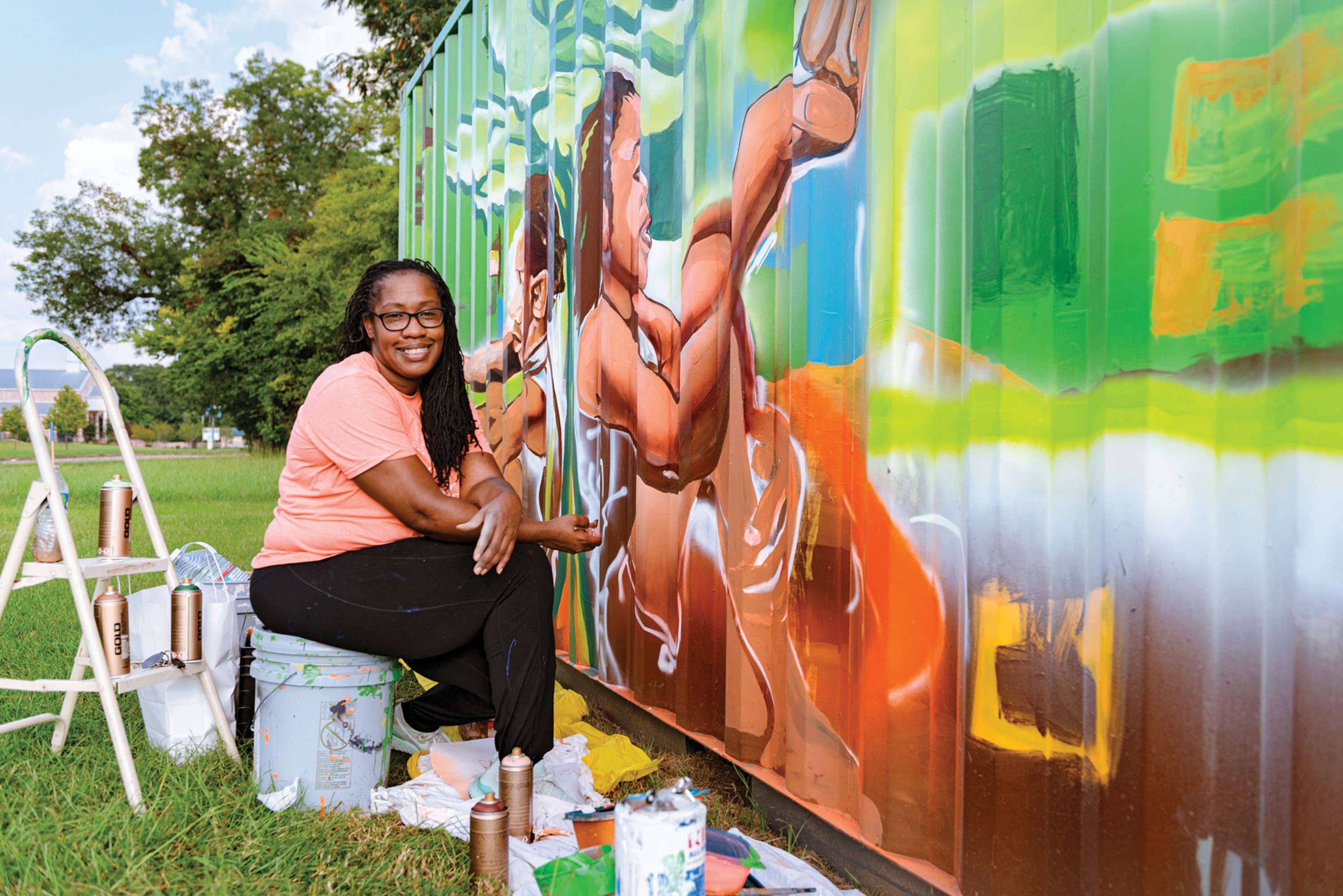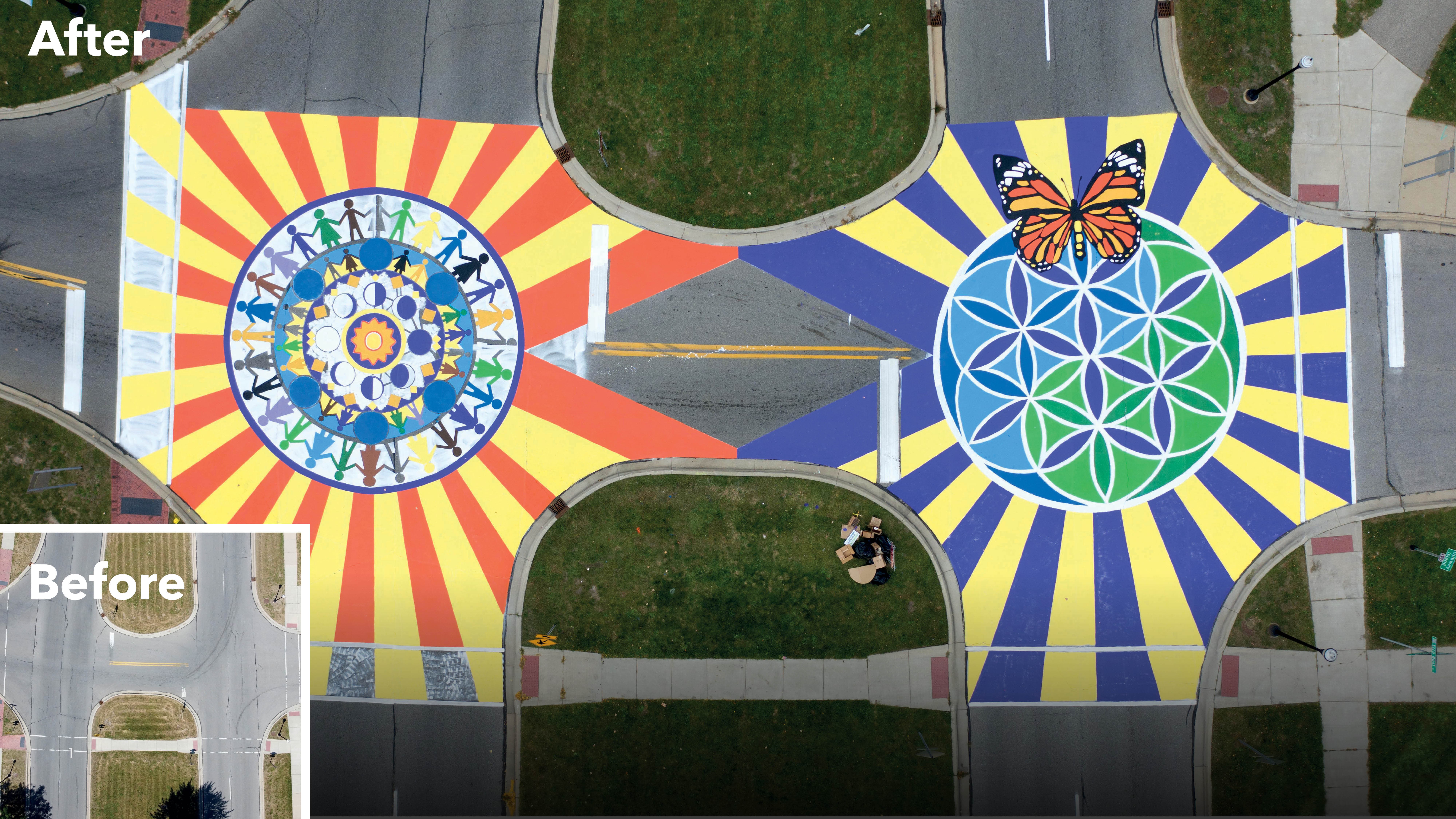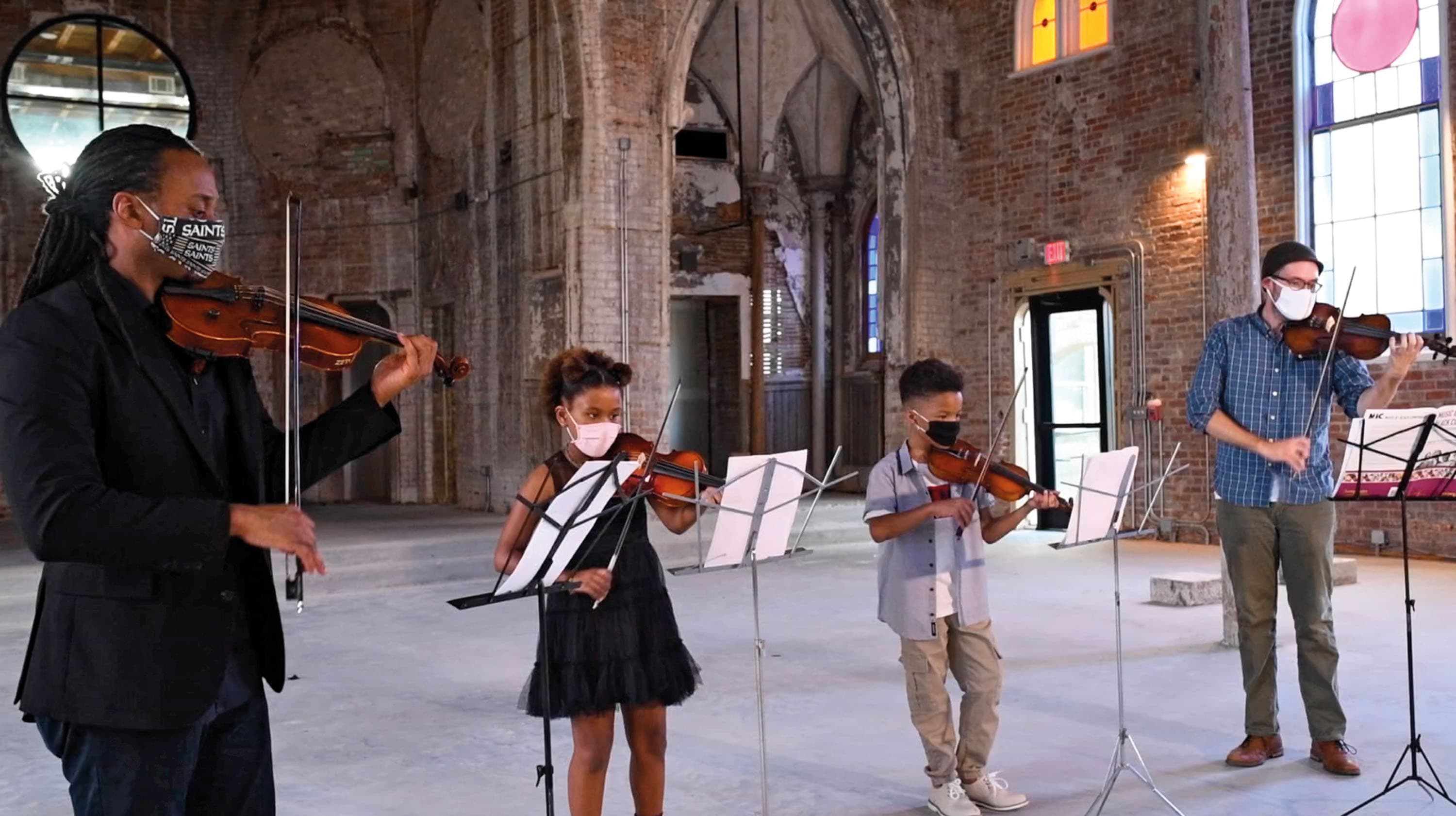Harnessing the Power of the Arts to Enhance Communities
The Arts
“As we continue to deal with the devastating impact of the pandemic, it’s more important than ever that we work together to improve life in our cities. Culture and creativity have the power to accelerate our economic recovery and to unite our communities during these challenging times.”
Justine Simons
Deputy Mayor for Culture and the Creative Industries
London, United Kingdom
Through the Bloomberg Connects program, Bloomberg Philanthropies supports the development of state-of-the- art technology, including a new mobile app and other dynamic tools, to enhance the experience of cultural institutions on- and off-site. Bloomberg Philanthropies has long supported this work in partnership with cultural organizations, and it has only become more important as the pandemic has forced them to adapt and develop new digital programming.
More than145,000 downloads of the Bloomberg Connects app, which features over 2,000 works of art, almost 200 plant and tree varieties, over 20 historical aircrafts, and one unearthed Roman temple
In November 2019, Bloomberg Philanthropies launched the Bloomberg Connects app, a philanthropic product developed in collaboration with engineers and designers at Bloomberg L.P. Today, the digital guide is helping innovative cultural institutions in the United States and United Kingdom, including art and history museums, parks, and botanical gardens, provide safer and more engaging experiences for on-site visitors, while also helping them deliver dynamic content to audiences at home. Expanding to many more noteworthy institutions throughout the world in 2021, the app is available for free in the Apple App Store and the Google Play Store.
When cultural institutions were forced to close in response to the pandemic, the Bloomberg Connects app offered a vital platform for delivering safe at-home cultural interactions. Bloomberg Philanthropies’ cultural partners worked quickly and creatively to present engaging virtual experiences on the app — allowing users to access everything from oral histories and fun family content to multilingual podcasts and sensory experiences. App users have had access to artists and experts from home and have been able to connect to opportunities to support cultural institutions via membership, gift shop purchases, and fundraisers. Even as institutions reopened, they did so with very limited capacity, and the app has remained critical for bringing in more visitors virtually.
Guggenheim Museum, New York City
The Guggenheim Museum in New York, a Bloomberg Connects partner from inception, quickly pivoted to building the platform into a virtual portal to the entire museum. The Guggenheim tripled the number of exhibitions featured within the app and added new audio and video content. Recognizing the increased access the app provides, the museum translated their award-winning guide to the Frank Lloyd Wright building into 12 languages, for both local and global audiences. They also built out an audio guide to the museum featuring New Yorkers like Maggie Gyllenhaal using evocative language, originally created for the blind or visually impaired, so that users could visualize moving through the spiral museum in person and feel more connected. Once the museum reopened at limited capacity, the Guggenheim added new features to the app to support socially distant and contactless in-person viewing experiences, such as guidance on safety precautions and descriptive labels for different collection items to avoid visitors huddling around the physical labels.
Cultural Sponsorships
Bloomberg Philanthropies has long supported hundreds of arts and cultural organizations around the world, including by sponsoring innovative experiences such as the Met Museum’s Roof Garden Commission series — sponsored since 2007 — and the Serpentine Galleries’ Back to Earth project, a new collaborative, multiyear project highlighting the climate crisis. As many cultural organizations were forced to shut their doors because of the pandemic, Bloomberg Philanthropies worked to accelerate financial support and helped many organizations launch new virtual programming to reach audiences online and at home.
For example, with Bloomberg Philanthropies’ support, Dance Theatre of Harlem created a digital platform, DTH on Demand, to engage audiences in their homes. DTH on Demand includes full-length archival performances, conversations with artists, instructional videos for children and adults, and online classes for all levels taught by DTH company members, faculty, and alumni. These programs have received over 200,000 views and counting.
Public Art Challenge
Recognizing that public art has the power to help drive civic progress, Bloomberg Philanthropies launched the Public Art Challenge in 2014. The program invites mayors, community leaders, artists, and residents to collaborate on temporary public art projects that shine a light on critical issues and encourage action to address them. The five projects selected in the 2018 Public Art Challenge tackle issues including food equity, racial justice, neighborhood blight, healing after gun violence, and climate change.
While the pandemic has altered the speed at which these projects move forward, Bloomberg Philanthropies has been working closely with cities to ensure they continue to make progress, safely — including by offering additional virtual community programming, opening public art installations that allow for social distancing, and supporting artists’ efforts to complete their work in a different time frame.
Jackson, Mississippi: 2018 Public Art Challenge Winner
Jackson’s Fertile Ground project received $1 million to support a series of efforts — from a documentary to exhibitions, performances, and other events — focused on improving nutrition and food access in the city, an issue that is more important than ever with food insecurity on the rise due to the pandemic. Though the city had to delay its opening “EXPO” event, the project has continued with a number of exciting installations, including:
• An urban farm supplying organic food to markets and restaurants
• Outdoor murals about food access and equity painted by local artists
• Bags and apparel highlighting the project in local markets
• An outdoor gathering space and garden
• A socially distanced viewing of Kara Walker’s FIGA, a room-sized fist made from sugar and polystyrene, which was a segment from her larger piece built inside Brooklyn’s Domino Sugar Factory
The project also launched Fertile Ground, a documentary on PBS that features Mayor Chokwe Antar Lumumba, state representatives, and leaders of the project discussing barriers to healthy food access in Jackson. Watch at PBS.org.
Asphalt Art Initiative
The Asphalt Art Initiative, launched in October 2019, helps cities create visual art projects on streets, pedestrian areas, and public infrastructure that make them safer and more vibrant for residents and visitors to enjoy. This work has become all the more important as COVID-19 has caused many cities to reclaim outdoor spaces like roadways as places for people to enjoy while social distancing. One element of the initiative, the grant program, is supporting projects in 16 small and mid-sized U.S. cities, engaging community members and bringing vibrant public art to neighborhoods across the country. The other element of the initiative, the Asphalt Art Guide, shares tools, tactics, and case studies to help more cities around the world implement their own projects. Produced by Bloomberg Associates, the guide provides specific tips and best practices to help city agencies, artists, and community members create successful public art installations.
The Bloomberg Associates Asphalt Art Guide features successful plaza and roadway art activations around the world, as well as key steps and tips for developing such projects.
Saginaw, Michigan: Asphalt Art Initiative
The initiative’s first project launched in September 2020 in Saginaw, Michigan, where the regional transit authority worked with a community art collective to paint large ground murals on three intersections along a major downtown corridor. By using art to tie these intersections together, the project aimed to draw visitors downtown and support local businesses, while also celebrating the city’s diversity. All of the designs incorporate a butterfly as a unifying theme and a symbol of hope. With plans for over 13,000 square feet of artwork spread across three intersections, the four lead artists brought in roughly 20 supporting artists to help complete the installations in a single weekend. On the first day of installation, Saginaw also hosted a “paint-a-thon” event that invited community volunteers to use stencils to paint butterflies on the sidewalks connecting the intersections, allowing many volunteers to get involved while remaining socially distanced.
Arts Innovation and Management (AIM)
The pandemic and resulting economic crisis have created major challenges for small and mid-sized arts and cultural organizations — from dramatic revenue losses to diminished public and private support. As it has done for many years, the Arts Innovation and Management (AIM) program is helping leaders of these organizations by sharing best practices for managing operations and accessing new funding sources. Piloted in New York City in 2011 and expanded nationally in 2015, the program seeks to build the capacity of these essential institutions by providing general operating support, as well as management training to enhance strategic planning, board development, fundraising, and marketing.
“The Bloomberg AIM program supported Make Music NOLA during a crucial board transition, providing numerous opportunities for board engagement, fundraising support, and overall capacity building. Additionally, the AIM program provided Make Music NOLA with the guidance needed to establish yearly fundraisers and increase our individual donor base.”
Laura Patterson
Executive Director
Make Music NOLA
The current program cycle, begun in 2018, is working with 229 small and mid-sized organizations in seven cities. In response to the pandemic, Bloomberg Philanthropies developed a special virtual webinar on strategies for creating digital programming, which spurred 75 percent of participating organizations to adopt new digital strategies. AIM is providing many of these organizations with intensive planning support so they can continue playing a vital role in their communities and cities well into the future.
In October 2020, Bloomberg Philanthropies announced a new collaboration with the Flamboyan Arts Fund, a partnership between the Flamboyan Foundation, composer Lin-Manuel Miranda, his family, and the Broadway musical Hamilton. Through the collaboration, Bloomberg Philanthropies is bringing the AIM program model to Puerto Rico. In a related effort to provide management training to cultural organizations, Bloomberg Philanthropies is also collaborating with the Ford Foundation on their America’s Cultural Treasures initiative, which has committed more than $156 million from 16 foundations and donors to support Black, Latinx, Asian, and Indigenous arts organizations.
Bloomberg Arts Internship
The pandemic made it more difficult for teens to find the kinds of skills-rich summer internships that are essential to future employment. First launched in 2012, the Bloomberg Arts Internship program continued to give young people meaningful paid work experience at cultural organizations in New York City, Baltimore, Philadelphia, and Boston in 2020, along with job readiness training and college preparation. Bloomberg Philanthropies transitioned the program to operate virtually during the pandemic, allowing 110 rising public high school seniors to participate in paid internships at 65 different cultural organizations.
Top photo: Artist Ricardo Moody painting a mural as part of Jackson, Mississippi’s Public Art Challenge-winning project Fertile Ground. Credit: Drew Dempsey/Fertile Ground
